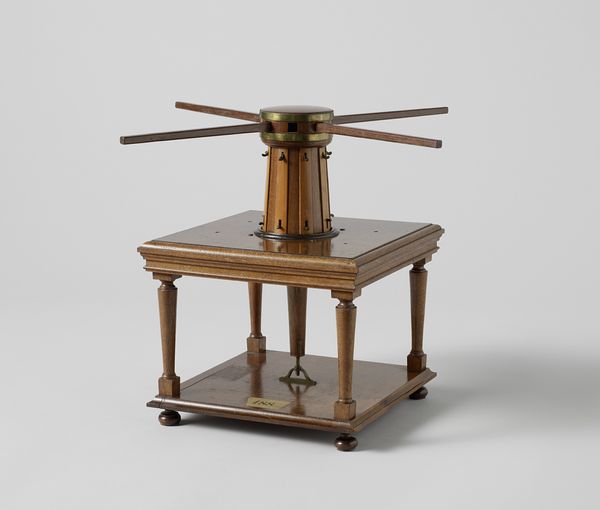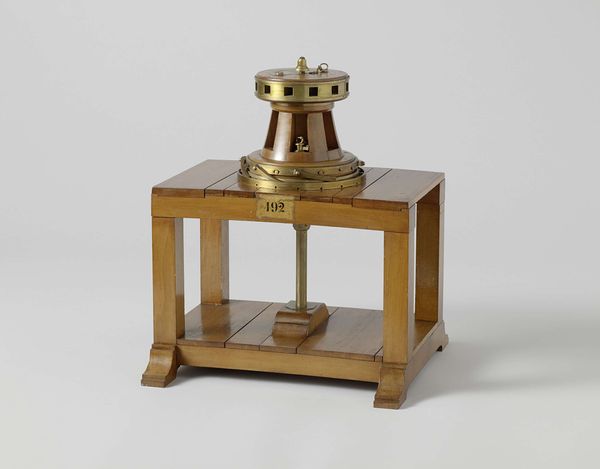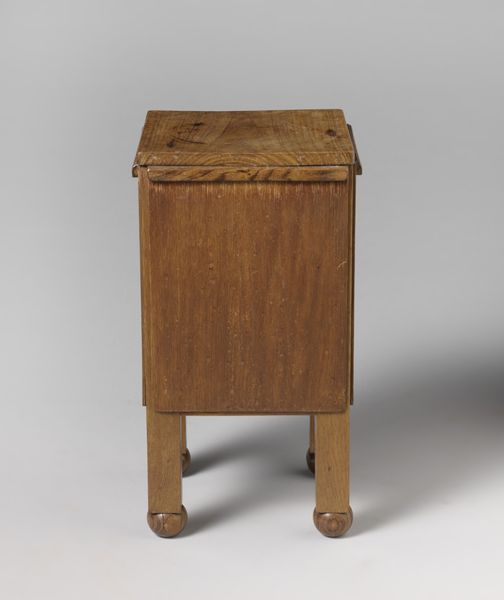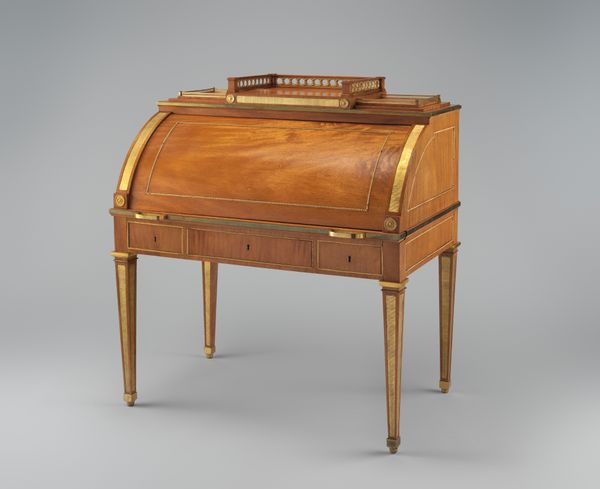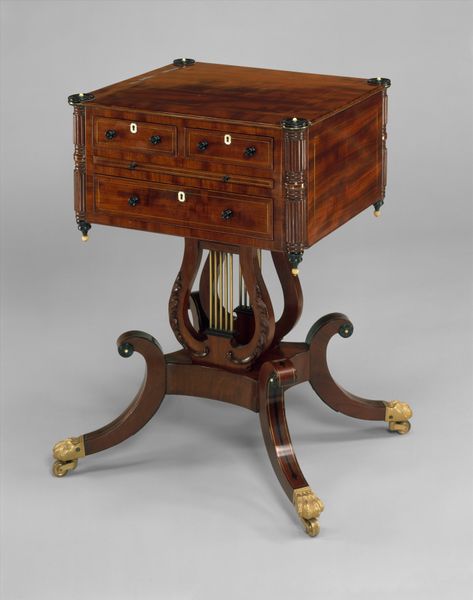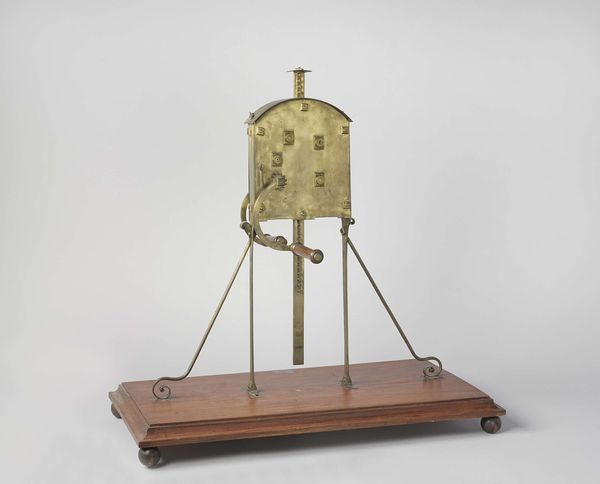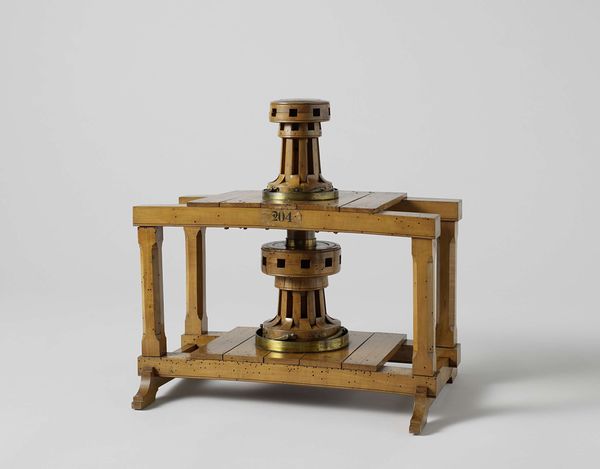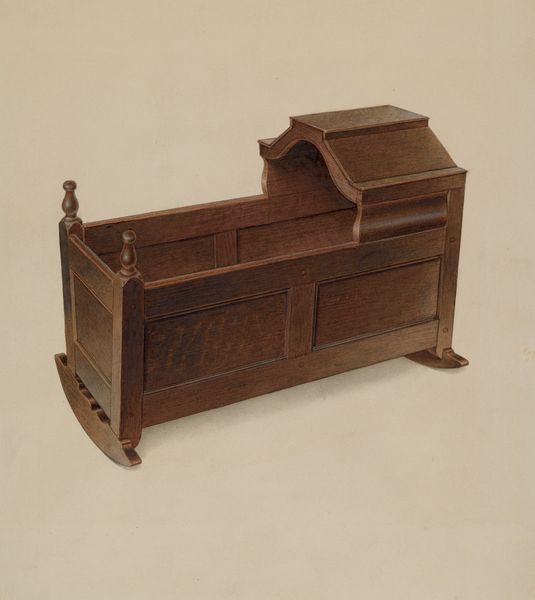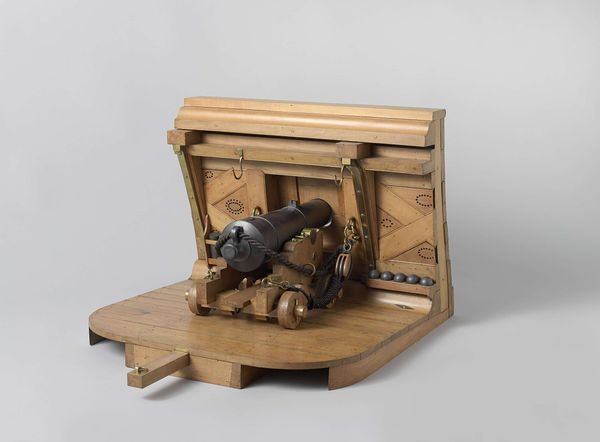
brass, wood
#
neoclacissism
#
brass
#
furniture
#
wood
#
decorative-art
Dimensions: height 56 cm, width 54 cm, depth 45 cm
Copyright: Rijks Museum: Open Domain
Curator: Well, hello there! We’re looking at an exquisite letter casket, crafted between 1808 and 1810 by Matthijs Horrix. It's currently residing at the Rijksmuseum. Editor: My word, what a curious object. It’s rather...grand for holding letters, isn't it? Like a tiny, opulent Roman bath on stilts. The dark wood is almost sombre, but those gleaming brass details just pop. Curator: Precisely. Horrix blended neoclassical elegance with a kind of understated imperial flair. Notice the clean lines, the restrained ornamentation— hallmarks of neoclassicism—but then observe the brass eagles. Editor: The eagles feel significant. Not just decoration, right? What do they whisper to us? Curator: The eagle, especially during the Napoleonic era, symbolized power, victory, and imperial authority. So placing them on something as intimate as a letter casket elevates the act of correspondence, making it seem almost like a matter of state. Letters had immense power. Editor: It feels almost…prescient of the digital age, in a bizarre way. I mean, we don’t necessarily see emails as powerful, but the instant connectivity they provide? It changed everything, didn't it? Curator: In a way, yes. The brass elements too. The brasswork suggests a longing for the past, yet it is forward thinking for a new Republic rooted in Roman ideals. These elements carry cultural memories across time. This letter casket, it echoes not only ancient Rome, but resonates, I think, even in our age of instant communication. Editor: The casket stands almost as a kind of miniature temple dedicated to the written word... though I still chuckle a little thinking about something so grand for, you know, just storing letters. Curator: But aren’t letters sacred, in a way? Carriers of joy, of sorrow, of love and war. So I guess a casket fitting the task is welcome. Editor: Yes, the emotions are grand, even if the message is not. It does make you wonder what sort of correspondence might have been deemed worthy of such an elaborate vessel. Thank you for highlighting the artistry. Curator: Indeed. An amazing artefact! Thank you.
Comments
rijksmuseum about 2 years ago
⋮
This letter casket or box comes from Louis Napoleon’s office in the royal palace. It was a new type of furniture, used to store documents for the King’s attention so that servants could not read them. The casket’s form is based on a shield from antiquity.
Join the conversation
Join millions of artists and users on Artera today and experience the ultimate creative platform.
